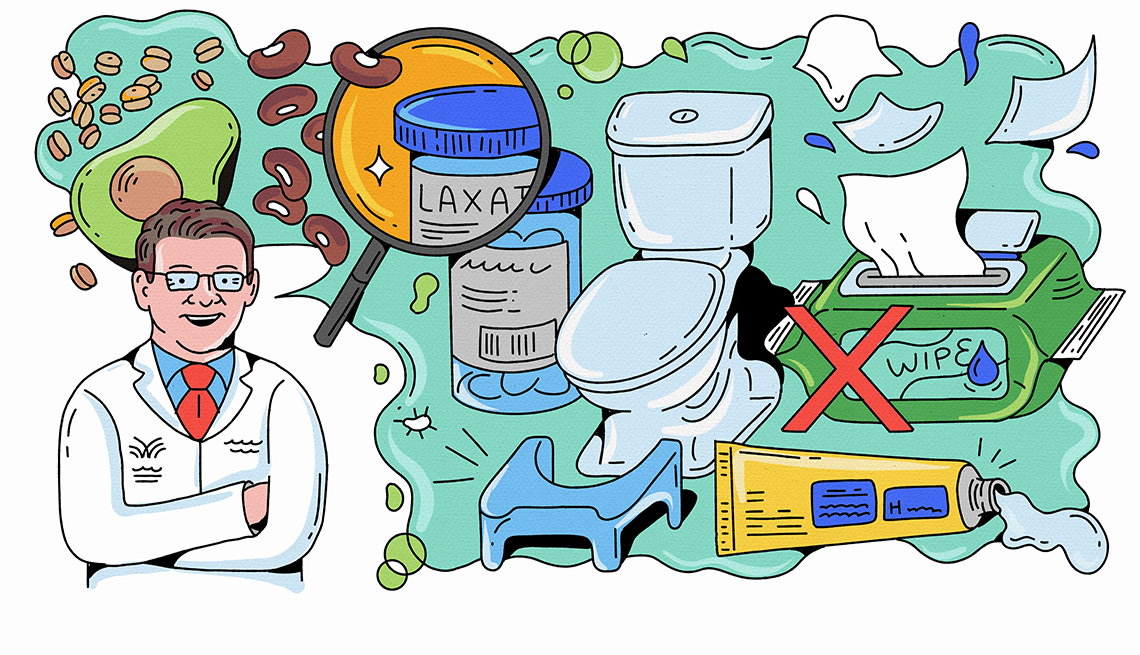
- Select a language for the TTS:
- UK English Female
- UK English Male
- US English Female
- US English Male
- Australian Female
- Australian Male
- Language selected: (auto detect) - EN
Play all audios:
NEVER USE A LOOFAH DOWN THERE Don’t overthink washing your butt in the shower. Using a loofah is just asking for trouble, especially if you’re too aggressive with it. All your anus needs is
a little soap and water, and make sure it’s soap that’s designed to be gentle on the skin. Just clean it like you would your arms or legs, with a washcloth and soap. And make sure you’re
using a different washcloth and bar of soap for your butt than you are for the rest of your body, particularly your face. That’s a one-way ticket to getting pinkeye! YOUR COLON DOESN’T NEED
CLEANING Any type of colon cleanse, whether it’s a colonic or enema — where fluid is used to flush out waste material and bacteria from the colon — isn’t just a waste of time but potentially
dangerous. People do get caught up in this idea that there’s “so much poop in your colon” so why not clean it out. I get it, but actually, the colon is supposed to be full of poop! It’s
literally a poop-processing plant, and it works just fine if you leave it alone. There’s zero data that any kind of cleanse can help you get the “toxins” out of your colon. Poop isn’t a
toxin, nor is anything in your GI tract unless you’ve swallowed poison. Leave your poor colon alone. WITCH HAZEL ISN’T A CURE-ALL Pretty much everything made for your butt has witch hazel
in it. From anti-chafing ointments to creams for anal fissures and hemorrhoids, it’s all loaded with witch hazel. There’s some evidence that witch hazel _can_ relieve symptoms like itching
and irritation, at least temporarily. But witch hazel is an astringent, a “pore-tightening” agent that can seriously dry out your skin in a bad way. That puts it in the same category as baby
wipes. If you really want to relieve your symptoms without drying out your anus like it’s the Sahara desert, take a warm bath with a cup of Epsom salts. THERE’S NO CORRECT NUMBER OF BOWEL
MOVEMENTS People overthink and overanalyze a lot of things, but nothing is more ridiculous than obsessing over whether you’re pooping too much or too little. The frequency of bowel movements
is affected by so many factors, like diet, lifestyle and a person’s overall health. In general, a healthy pooping schedule can run the gamut from three times a day to three times a week.
Any more or less than that and you should at least bring it up to your doctor. What’s more important than frequency is how those bowel movements feel. Are you straining? Is there pain or
bleeding? If not, stop counting the minutes between poops and let your body decide when it’s ready. A LITTLE FOOD IN YOUR STOOL ISN’T CAUSE FOR ALARM Seeing chunks of corn in your poop is
one thing, but people have a tendency to freak out when they see undigested foods like carrots, nuts, seeds and sometimes even the skins of vegetables like tomatoes or bell peppers in their
toilet bowl. Don’t hit the panic button! Many high-fiber foods are notoriously difficult to digest, so they pass through your body virtually unchanged. The only time to worry is if it’s
accompanied by diarrhea or unexplained weight loss, which could be symptoms of Crohn’s disease, irritable bowel syndrome (IBS) or lactose intolerance. RECTUM SPASMS ARE REAL! AND
PERFECTLY NORMAL! Having a sudden, sharp (if fleeting) pain in your rectum can be scary, but in most cases, it’s nothing to worry about. The key here is the pain comes on out of nowhere and
isn’t related to pooping. It actually has a name — it’s called proctalgia fugax. The pain can be so intense that it’ll wake you from a deep sleep, and it usually lasts anywhere from a few
seconds to a few minutes. We’re not sure exactly why it happens, but there’s speculation that it’s caused by stress, constipation and possibly even sex. Men can experience pain after an
orgasm, and women can have pain with intercourse, and in both cases, it’s caused by what we call a “pelvic floor spasm.” I’ve been seeing this in both sexes more and more, and pelvic floor
physical therapy can be really helpful in alleviating the discomfort. In France, all women who’ve given birth get weeks of free pelvic floor PT courtesy of the government, but in the U.S.,
most people still have no idea it exists.






